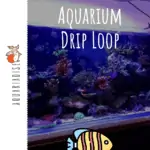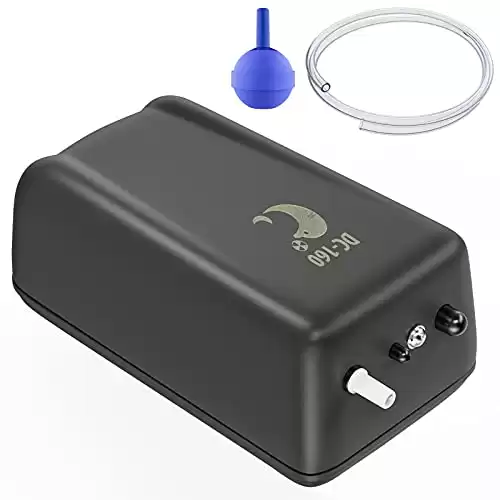If you’re about to buy a beautiful new fish tank, you’ll no doubt be aware that you need to buy various electrical items for it. No matter what size the tank, you’ll need a filtration system. If you plan on keeping tropical fish, you’ll need a heater. And to provide your fish with plenty of oxygen, you might want to install an air bubbler too.
Obviously, electricity and water don’t make happy bedfellows, and sadly, accidents do happen. That’s why you need to know what a drip loop is and how to install one.
So, with the safety of you, your family, and your fish in mind, we’ve put together this guide to drip loops. You’re welcome!
Electrical equipment for your aquarium
No matter what species of fish you keep, you will need a variety of electrical appliances as well as an aquarium.
Coldwater and tropical fish species need clean water if they’re to stay happy and thrive no matter what size of an aquarium you have. For that reason, you must have an efficient filtration system.
Tropical fish live in warm water, so you need a heater for your tank, unless you have a filtration system that has an integral heater included within it. If you live in a very hot climate or in a region where the summers are extremely warm, you might need a chiller to keep the water temperature within acceptable parameters for your fish.
Most aquarium starter kits come with lights included, but if not, you’ll need to buy a lighting unit so that you can see your fish and grow live plants if you want to.
An optional extra that’s highly beneficial for species that need well-oxygenated water, such as goldfish, is an airstone or air bubbler. Air bubblers are powered by a small pump that you buy separately.
Staying safe
Now, all that electrical kit must be plugged into a power outlet in the wall right beside a fish tank full of water, and that’s a clear and present danger!
Many accidents involving fish tanks and electricity happen when water finds its way from the tank into the electrical supply. That could cause the power to short, potentially killing your fish or giving you a massive electric shock if you touch the tank or the plug socket.
Setting up a drip loop is a very effective way of ensuring the safe operation of the electrical kit surrounding your fish tank and is recommended by all manufacturers of aquarium equipment. So, what is a drip loop, why do you need one, and how do you set up a drip loop?
What is an aquarium drip loop?
Drip loops are simple devices that are used to prevent water from leaking into electrical outlets near your aquarium. A drip loop allows the electrical wire to hang down in a downward loop, and then back up to the electrical outlet.
The premise of a drip loop is simple. Water is relatively heavy and, therefore, always flows downward. In the case of your power cord, any water that splashes out of the fsh tank will run straight down the cord and into the unit that the outlet is plugged into, with potentially disastrous results.
How to make an aquarium drip loop
Making a drip loop is super easy. In fact, you may even find that you have made a drip loop for your fish tank’s electrical equipment without even realizing it!
Do you need to create a drip loop?
Basically, as long as your electrical cord is long enough to drop down below the power outlet that it’s plugged into, and then back up again, you’ve made a drip loop. If your electrical wires are all long enough to make loops that fall below the plug sockets, you don’t need to do anything more.
A word of caution …
If you use an air bubbler, the pump must be situated above the water line. That’s because if the pump fails and it’s located below the water line, there’s a danger that water will flow from the tank, down the airline, and into the pump, potentially causing it to short out before the water even reaches the power outlet.
Most small pumps have loops incorporated into their casing that enable you to fix the pump to the wall above your fish tank. From personal experience, I would advise anyone who is considering adding an air bubbler to their setup to take advantage of those fixing loops!
Making a drip loop

Remember that water always flows downhill toward the lowest point of gravity. If your cords run straight from the fish tank to the plug in the wall socket, any leaking water will flow right down the cord and into the power outlet. So, if your aquarium equipment wires are not long enough to create a loop, you’ll need to use an extension cord.
Finally, to ensure that the cord remains safely looped, fix a cord clip to the wall just below the power outlet and thread the wire though it. Should any water run down the power cord, it will drip safely off the lowest point of the cord, instead of flowing into the electrical power outlet.
Ground Fault Circuit Interrupter (GFCI)
Another way of ensuring that your setup is safe is to use a Ground Fault Circuit Interrupter (GFCI). A GFCI monitors the amount of electrical current that’s flowing from hot to neutral poles in the socket. If any imbalance of those levels is detected, the circuit will trip, and the flow of current will be cut off.
The GFCI is super-sensitive and can detect an imbalance as small as five milliamps. That will cut off the electrical current in a fraction of a second, keeping you safe and preventing the danger of electric shock. It’s likely that you already have GFCIs in your bathroom and kitchen, but any standard power outlet can be upgraded. You can also buy GFCI outlet plugins and power strips.
Using extension cords
If you need to use an extension cord and it’s laying on the floor or hanging behind the tank, tie up the power cables to create a loop in them infront of the plugs that are plugged into the extension cord. You also have the option of using cord clips that are inexpensive and can be used to attach the cords to the wall above and behind the tank.
FAQs
In this section of our guide to drip loops, we answer some of the most commonly asked questions by aquarists about power outages and the effect that could have on a fish tank and its inhabitants.
What happens to your aquarium if the power cuts out?
The effect of a power outage on a fish tank depends on a variety of factors and varies from tank to tank. Generally, large tanks will withstand the lack of heat and filtration better than smaller setups.
If necessary, keep the tank warm by wrapping it in a blanket or some bubble wrap. As a general rule, the tank should be fine for up to 24 hours, which should give you plenty of time to restore power to your electrical componentry. After a longish period during which the filtration system hasn’t worked, it’s a good idea to carry out a partial water change.
Will your fish die if the filter and heater fail?
Unless your house is especially cold and your lose your heater for more than 24 hours, most tropical fish should be fine. Be careful when reheating the water that you don’t do so too quickly or you risk causing temperature shock to your fish.
Unless the tank was especially dirty in the first place, your fish shouldn’t suffer too much without a filter for a day or so. As a precaution, you could carry out a water change and test the water to make sure that levels of ammonia, nitrites, and nitrates haven’t become too high.
How can I oxygenate the water if the pump fails?
Did you know that you can buy battery-operated air pumps for fish tanks? Well you can! And that can be your fishes’ savior in the event of a power cut. You can also improvise a filtration system with one of these handy gadgets.
The bubbles that the airstone creates agitate the water surface, helping to oxygenate it for your fish. If you have a freshwater aquarium, take the media out of the filter and place it in a nylon media bag. If you don’t have one, clean pantyhose will work just as well! Place the bag of filter media on top of the airstone. As water flows through the media, it can work pretty well as a temporary filtration system until power is restored.
Battery-operated air pumps cost as little as $10, and they generally take two D-cell batteries. The run-time for these pumps is between 10 and 30 hours, depending on the quality of the pump and the batteries that you use.
Final thoughts
Electrity and water don’t mix, but you can keep your fish tank and your family safe by making sure that you have a drip loop set up to prevent leaking water from running down the power cord and into the power outlet.
If your power does cut out for a day or so, your fish should be fine. Carry out a partial water change to make sure that levels of harmful ammonia, nitrites, and nitrates in the water don’t get too high, and utilize a battery-operated pump to keep your airstone bubbling to oxygenate the water. If the tank begins to cool quickly, wrap the aquarium in a blanket or in bubble wrap to provide insulation and retain as much of the heat as possible.





















